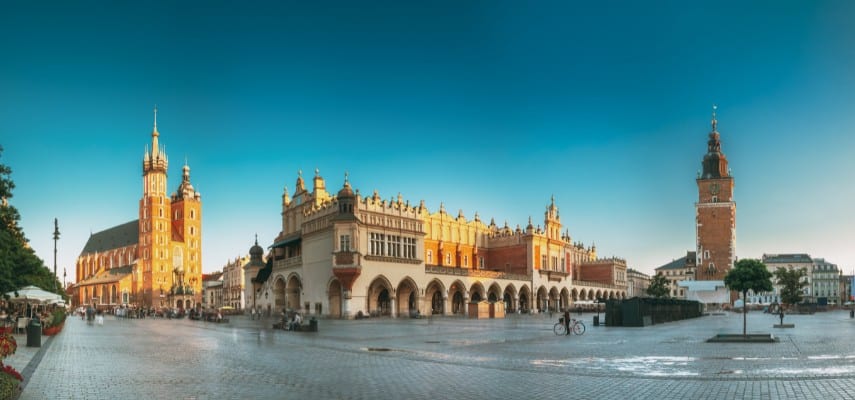
The United States, a land of sprawling landscapes, vibrant cities, and a melting pot of cultures, offers a travel experience unlike any other. From the iconic skylines of New York and Chicago to the natural wonders of the Grand Canyon and Yellowstone, the US boasts a diverse tapestry of attractions waiting to be explored. This comprehensive guide will equip you with the essential knowledge to plan your unforgettable journey to the land of opportunity.
Before You Go: Planning Your American Adventure
Before packing your bags and dreaming of Route 66, careful planning is crucial. Here’s a breakdown of essential pre-travel considerations:

Related Articles about Conquering the American Dream: A Comprehensive Guide to Traveling the United States:
- Vancouver: A Tapestry of Urban Sophistication and Natural Majesty
- Slovakia: A Tapestry of Castles, Caves, and Culture
- The Grand Tapestry: Exploring the United Kingdom’s Top Attractions
- Unveiling the Jewels of the Desert: A Comprehensive Guide to the United Arab Emirates
- Hong Kong’s Epitome of Luxury: A Connoisseur’s Guide to the City’s Finest Hotels and Unforgettable Experiences
1. Visa Requirements:
- Visa Waiver Program (VWP): Citizens of certain countries (including most European countries, Australia, New Zealand, and Japan) can travel to the US for tourism, business, or transit for up to 90 days without a visa under the VWP. You’ll need to apply for an Electronic System for Travel Authorization (ESTA) online before your trip.
- Visa: If you’re not eligible for the VWP, you’ll need to apply for a visa at a US embassy or consulate in your home country. The type of visa you need depends on the purpose of your visit (e.g., B-1/B-2 for tourism or business).
2. Travel Insurance:
Healthcare in the US is notoriously expensive. Comprehensive travel insurance is an absolute must. Ensure your policy covers medical emergencies, trip cancellations, lost luggage, and other potential issues.
3. Budgeting:
The US can be an expensive destination, especially in major cities. Research the average costs of accommodation, transportation, food, and activities in the areas you plan to visit. Set a realistic daily budget and factor in unexpected expenses.

4. Currency:
The currency is the US Dollar (USD). Credit and debit cards are widely accepted, but carrying some cash is always a good idea, especially for smaller establishments or tipping.
5. Accommodation Bookings:
Especially during peak season, it’s advisable to book your accommodation in advance. Popular destinations and events can lead to rapid price increases and limited availability.
6. Packing Essentials:
Pack according to the season and the regions you plan to visit. Comfortable walking shoes are essential, regardless of your itinerary. Don’t forget adapters for electronic devices and any necessary medications.
Top Attractions: A Coast-to-Coast Adventure
The US offers a dizzying array of attractions, catering to every interest. Here’s a glimpse into some of the most popular and iconic destinations:
- New York City, New York: The city that never sleeps. Explore iconic landmarks like the Statue of Liberty, Times Square, Central Park, and the Empire State Building. Immerse yourself in world-class museums like the Metropolitan Museum of Art and the Museum of Modern Art (MoMA). Catch a Broadway show, indulge in diverse culinary experiences, and soak in the vibrant energy of this global metropolis.
- Los Angeles, California: Home to Hollywood and the entertainment industry. Visit iconic film studios, walk the Hollywood Walk of Fame, and explore the beaches of Santa Monica and Venice. Discover art museums like the Getty Center and the Los Angeles County Museum of Art (LACMA). Experience the thrill of theme parks like Disneyland and Universal Studios Hollywood.
- San Francisco, California: A city known for its iconic Golden Gate Bridge, charming cable cars, and diverse neighborhoods. Explore Alcatraz Island, stroll through Fisherman’s Wharf, and visit Chinatown, one of the oldest and largest in the US. Enjoy the vibrant arts scene and the thriving culinary landscape.
- Grand Canyon National Park, Arizona: One of the Seven Natural Wonders of the World. Marvel at the breathtaking scale and beauty of the Grand Canyon, carved over millions of years by the Colorado River. Hike along the rim, take a mule ride down into the canyon, or enjoy a scenic helicopter tour.
- Yellowstone National Park, Wyoming, Montana, Idaho: A geothermal wonderland with geysers, hot springs, and abundant wildlife. Witness the iconic Old Faithful geyser erupt, explore the colorful Grand Prismatic Spring, and spot bison, elk, and even bears.
- Miami, Florida: A vibrant city known for its stunning beaches, Art Deco architecture, and Latin American culture. Relax on South Beach, explore the colorful streets of Little Havana, and enjoy the vibrant nightlife.
- Washington, D.C.: The nation’s capital, home to iconic monuments, museums, and historical landmarks. Visit the White House, the Capitol Building, the Lincoln Memorial, and the Washington Monument. Explore the Smithsonian museums, offering free admission to a vast collection of art, history, and science.
- Las Vegas, Nevada: The entertainment capital of the world, known for its casinos, shows, and vibrant nightlife. Experience the thrill of gambling, catch a world-class performance, and explore the extravagant hotels and attractions along the Las Vegas Strip.
- New Orleans, Louisiana: A city with a rich history, unique culture, and vibrant music scene. Explore the French Quarter, enjoy live jazz music, and indulge in delicious Creole and Cajun cuisine.
- Chicago, Illinois: A city known for its stunning architecture, world-class museums, and vibrant arts scene. Admire the skyline from the top of the Willis Tower (formerly Sears Tower), explore the Art Institute of Chicago, and catch a blues performance in a local club.
A Glimpse into American History:
The US boasts a rich and complex history, shaped by immigration, innovation, and social change. Understanding key historical events and figures can enrich your travel experience:
- The American Revolution: Explore historical sites related to the struggle for independence from British rule, such as Boston, Philadelphia, and Yorktown.
- The Civil War: Visit battlefields like Gettysburg and Vicksburg to learn about the conflict that divided the nation over slavery.
- The Civil Rights Movement: Explore sites associated with the fight for racial equality, such as Montgomery, Alabama, and Memphis, Tennessee.
- Immigration: Visit Ellis Island in New York City to learn about the millions of immigrants who passed through its doors, shaping the cultural landscape of the US.
Travel Tips for a Smooth Journey:
- Tipping: Tipping is customary in the US for services like restaurants, taxis, and hotel staff. A standard tip is 15-20% for good service.
- Driving: Driving is a popular way to explore the US, especially for road trips. Be aware of local traffic laws and speed limits.
- Public Transportation: Major cities offer public transportation options like subways, buses, and trains.
- Safety: Be aware of your surroundings and take precautions against petty theft, especially in crowded tourist areas.
- Stay Connected: Purchase a local SIM card or use Wi-Fi to stay connected with family and friends.
- Learn Basic Phrases: While English is the official language, learning a few basic phrases can be helpful, especially in areas with diverse populations.
- Be Respectful of Local Customs: Be mindful of local customs and traditions, and be respectful of different cultures and beliefs.
Accommodation Options: From Budget to Luxury
The US offers a wide range of accommodation options to suit every budget and travel style:
- Hotels: From budget-friendly motels to luxurious five-star hotels, you’ll find hotels in every city and town.
- Hostels: A budget-friendly option for solo travelers and backpackers, offering dormitory-style rooms and communal facilities.
- Vacation Rentals: Websites like Airbnb and VRBO offer a wide selection of apartments, houses, and villas for rent, providing a more private and home-like experience.
- Camping: National and state parks offer campsites for those who enjoy spending time in nature.
- Bed and Breakfasts: Charming and intimate accommodations offering personalized service and a home-cooked breakfast.
Transportation: Getting Around the US
The US offers a variety of transportation options, depending on your budget, time constraints, and travel style:
- Flights: Domestic flights are a convenient way to travel long distances, especially between major cities.
- Trains: Amtrak offers train service throughout the US, providing a scenic and comfortable way to travel.
- Buses: Greyhound and other bus companies offer affordable transportation between cities and towns.
- Rental Cars: Renting a car is a great option for exploring the US at your own pace, especially for road trips.
- Public Transportation: Major cities offer public transportation options like subways, buses, and trains.
- Ride-Sharing Services: Uber and Lyft are widely available in major cities, offering a convenient way to get around.
Best Time to Visit: Seasonal Considerations
The best time to visit the US depends on the region you plan to visit and your preferred activities:
- Spring (March-May): A pleasant time to visit most parts of the US, with mild temperatures and blooming flowers.
- Summer (June-August): A popular time to visit, with warm weather and long days. Be prepared for crowds and higher prices, especially in popular tourist destinations.
- Fall (September-November): A beautiful time to visit, with colorful foliage and cooler temperatures.
- Winter (December-February): A great time to visit for skiing and snowboarding, or to experience the holiday season in major cities.
Conclusion: Your American Adventure Awaits
Traveling to the United States is an opportunity to experience a diverse and captivating country. By carefully planning your trip, understanding the local customs, and exploring the many attractions on offer, you can create an unforgettable adventure. From the bustling streets of New York City to the majestic landscapes of the Grand Canyon, the US has something to offer every traveler. So, pack your bags, embrace the American spirit, and get ready to explore the land of opportunity. Your American dream awaits!





